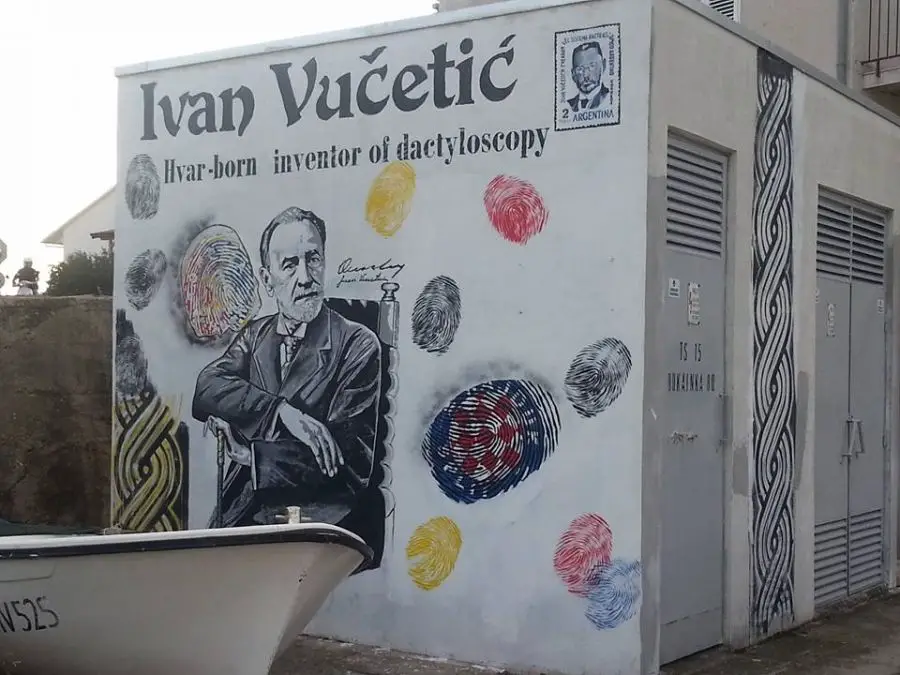October 8. 2018 marks 160 years since the birth of Ivan Vucetic on Hvar, the man who made the world a safer place by discovering the criminal use of fingerprinting in Argentina. But the fingerprints of Dalmatia are much older than that.
Life as a blogger has its ups and downs. There are days when you are on fire and there is so much to write. And then come the quieter days, when inspiration is missing, and producing those necessary words becomes as hard as doing a regular 9-5 job.
After more than seven years of blogging, I have learned that the smallest thing can inspire me to write, even when I am not in the mood. Often it is something quite by chance, such as a throwaway comment over lunch.
Or a photograph.
My good friend Igor Tomljenovic is a photographer whose work I follow closely. He has a great eye for detail and has had a more fulfilling career than most snappers. HIs photos often get me thinking, and they frequently inspire, as this one did last week.
A fingerprint island in the Adriatic.
I have never been to Baljenac, and I am sure that like many photogenic attractions from the air (such as Croatia’s iconic beach of Zlatni Rat in Bol), the reality on the ground is a lot more disappointing and, as amazing as the tiny island of Baljenac looks from the air, the reality on the ground would just be stone walls and trees.
It is a remarkable little island, with a size of just 0.14 km2, but with an astonishing 23.35 km of dry stone walls on the island. While I used to tease my real estate clients on Hvar that the reason for such walls was that winters were boring and there was an annual ‘Best Dried Stone Wall’ competition to beat the winter boredom, the reality of course is that the stones were cleared to provide land for cultivation, and the walls protected the growing crops.
Nowhere has done it quite as magnificently as Baljenac, and Igor’s photo above truly makes the island look like a fingerprint emerging from a morning swim in the Adriatic.
Take a look at Baljenac in greater detail in the video below.
Croatia’s relationship with fingerprints goes far deeper than the remarkable stonework on this amazing island, for it was a man from Hvar who discovered the uniqueness of fingerprinting during a murder investigation in Argentina in 1892. Ivan Vucetic, who became Juan Vucetich following his emigration from Hvar to Argentina, made the first positive identification of a criminal in a case where Francisca Rojas had killed her two children and then cut her throat, trying to put the blame on the outside attacker. A bloody print identified her as the killer. The father of dactyloscopy was born.
Vucetic would have been 160 on July 19 this year, and his memory lives on on his native island with a plaque on the wall of the home of his birth and (much more recently) a bust in a small park on the riva, as well as this lovely mural (nothing without Hajduk Split…) at the entrance to Hvar Town from the new road from Stari Grad.

Someone told me that there was a conference of 120 criminologists on Hvar a few years ago, convening at the birthplace of the man whose work did so much to combat crime. Hvar was never safer than during those three days. I smiled when I heard that story, but it also got me thinking – with Croatia an exceptionally safe country, is the fingerprint island of Baljenac and the father of dactylospcopy one more branding opportunity going to waste?









